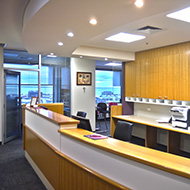
Coronary Angiography & Cardiac Catheterisation
Cardiac Catheterisation is a general term that describes the procedure of placing catheters inside the heart. Coronary angiography is one form of Cardiac Catheterisation procedure. These procedures are performed in a special x-ray facility called a "Cath Lab" or "Catheter Suite" or “Angiography Suite”. Coronary Angiography is a diagnostic x-ray procedure performed to evaluate the arteries of the heart for the presence of narrowing due to fatty deposits.
The arteries of the heart are called "Coronary Arteries" since they form a crown ("corona") over the surface of the heart.
About the procedure
Coronary Angiography may be performed to further evaluate the cause of symptoms that might include: chest pain or discomfort, shortness of breath, black outs. The procedure involves passing a catheter into the coronary arteries via a needle puncture through the skin at the upper leg or arm.
Prior to your Coronary Angiography, you may be asked to fast for 4-6 hours before the test. You will require a day admission but sometimes it is necessary to remain in hospital overnight. A local anaesthetic is then injected over the artery in the groin (Femoral Artery), the wrist (Radial Artery), or the elbow (Brachial Artery). A sheath is then inserted into the artery, through a needle puncture in the skin. Your cardiologist makes the choice of insertion site.
After a catheter is passed through the puncture site and positioned at the origin of the major coronary arteries, x-ray contrast is injected into the coronary artery, whilst an x-ray movie is recorded.
Most people do not experience any trouble with this procedure, but some people may have nausea or chest discomfort when the dye is injected. Very rarely, there might be a more serious complication. Often, the pumping action of the heart is also evaluated during this procedure. This involves injecting a larger amount of x-ray contrast into the main pumping chamber (called the left ventricle); this will usually cause a hot, flushing sensation that lasts for 10-15 seconds.
The procedure takes 30-40 minutes. Once the test is completed, you will be returned to the recovery ward. The sheath will be removed and pressure is applied to the site until bleeding has stopped. Skilled nurses who are specifically trained to care for patients undergoing cardiac procedures will closely monitor you. Usually, you will be able to go home the same day - people who live alone or a long distance away from Geelong might be asked to stay in hospital overnight.
